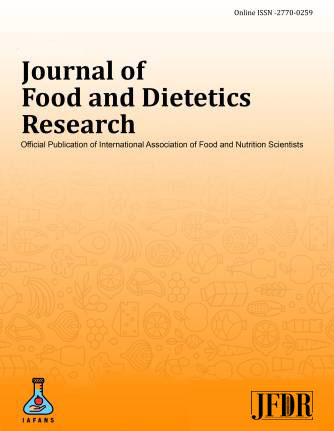A Comparative Study of Nutritional Status, MNA, Nutrient Intake and Academic Performance of the Secondary School Children
DOI:
https://doi.org/10.48165/jfdr.2021.1.3.3Abstract
The present study aims to seek out the association between academic performance, nutritional status, nutrition intake of secondary school children in the Salem district of Tamil Nadu. The sample of the study consisted of 280 secondary school students under the age group of 13-17 years belonging to 12 different Government Residential Tribal schools in Salem district. Tools utilized in this study were nutritional status such as height, weight, BMI, MNA scale and 24 hours recall method (nutrition intake) and academic performance was administered to the chosen subjects to elucidate the data. The collected data was analyzed statistically by employing mean, variance, t-test, and correlation. The nutritional status revealed that there was a significant difference between the mean weight of boys with high academic performance and girls with high academic performance of secondary school children. Regarding the MNA scales, there was insignificant between the groups and therefore the mean score intimates better improvement in girls. there were no significant differences between the boys and girls with low performance and high performance on nutrient content of energy, protein, fat, zinc (boys and girls with high performance), calcium, phosphorus, iron, sodium, vitamin A, Thiamin, niacin, vitamin C, Riboflavin (boys and girls with low performance) and folic acid. Regarding zinc content boys and girls with low performance, subjects showed a significant difference at a 1% level with mean scores of boys and girls were 5.24 and 5.25. Regarding riboflavin content of boys and girls with high performance was showed a significant difference at a 1% level with the same mean riboflavin scores of 0.95. Further, the correlation of the study variables showed a positive correlation between MNA with academic performance and weight at 0.01% level of significant difference and negative correlation was found in BMI with academics performance,. A positive correlation was observed between energy with protein, fat, zinc, phosphorus, iron, sodium, vitamin A, thiamine , niacin, riboflavin, and folic acid at 0.01% level of significance. Another positive correlation was found between energy with calcium at 0.05% level. Health promotion practitioners or teachers may utilize the findings from the study to the promoter within the school setting for the need to enhanced support students to improve their dietary habits, due to the potential impact on their academic performance.








